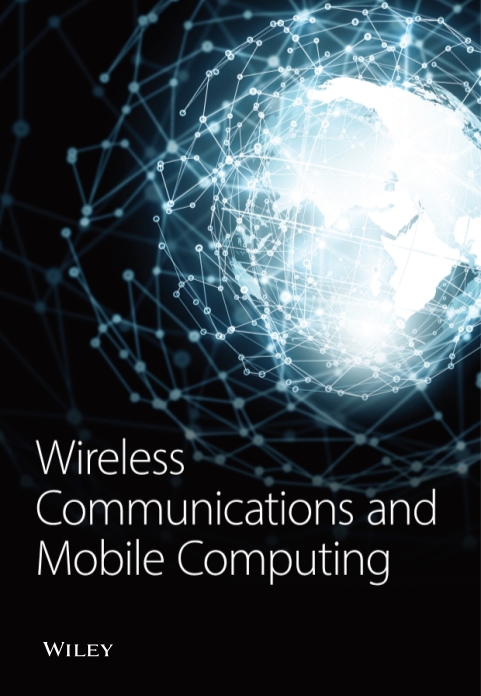Evaluating the Design and Teaching Effect of College Mobile English Learning Using Deep Learning Technique
Abstract
Mobile learning has emerged as a popular model for the teaching and learning process, which can also be described as a modernised version of the traditional classroom learning process. As modern education has been implemented, the educational level of both students and teachers has improved. This advancement is made possible by increased knowledge of how to use mobile technology with the Internet. In this study, a multiprocessor learning-based CNN algorithm is proposed to improve students’ English language speaking fluency. Additionally, the students and the teachers are considered available in the remote area, and the communication between them is done through an interactive system. The model is designed to focus on a teacher-centric perspective, in which the teacher has to make use of multiple resources or applications to perform an easier understanding of the course for the students. Hence, an intelligent system is designed to make the learning processes successful. The results show that the proposed algorithm works well in improving the teaching efficiency of mobile English learning. It also revealed that the accuracy level of the learning system used by college and university students has increased by 10%.
1. Introduction
In general, mobile learning is a new form of distance learning and a new expansion of e-learning. According to the view of cognitive learning, mobile learning is a different way of learning with its features like sexual situations and mobility. The goal of mobile learning is that students can learn anything at any place, any time, and any way [1]. The significant feature of mobile learning is that it enables us to offer an anytime and anywhere learning environment, offer assistance for situational learning, and render just-in-time learning content. Mobile learning seems to have had a considerable impact on traditional forms of education. It has far-reaching implications. It not only changes the significant deficiencies in the traditional system of teaching, which is limited by time and space but also makes teaching more interesting, allows students to become more dynamic, and attracts a large number of people to enthusiastically carry out mobile learning [2]. Anyone, at any time and from any place, could indeed enter the world of mobile learning. However, mobile learning is still in its early stages of development. It still has a lot of issues in practical applications. In mobile learning, the learning support system is unsatisfactory. There are numerous constraints, such as mobile learning lacks initiative, which is not targeted and is not strategic, being unaware of how to make the challenge open in mobile learning and how to ensure that the examination is objective and impartial, scientific, authoritative, and timely, and the mobile learning network system and network information query capabilities are still severely limited [3]. Mobile learning resources, which share this same core support of mobile learning, have not been fully adapted to the characteristics of mobile learning. Individual active interaction is sorely missing in mobile learning [4]. To address a common issue among students, statistical analysis will be carried out automatically, as Lenovo, for example. Given the current situation, it is critical to incorporate artificial intelligence technology into mobile learning. It is an important part of improving mobile learning. This expert system has the potential to provide an intelligent teaching environment [5]. It simulates an expert and a professor attempting to teach thought patterns and employs advanced teaching methods such as AI technology and mobile media to create an open, interactive teaching system. Students can obtain knowledge from the system using mobile devices [6]. The system can teach differently depending on student’s knowledge, abilities, and learning methods. It has the potential to achieve the best teaching effect and refer to the experience of individualised adaptive teaching. Mobile intelligent teaching expert systems are a new educational technology that is based on cognitive science and thinking science, integrated artificial intelligence technology, educational psychology, and knowledge from those other disciplines. The role of the teaching expert system is to seek a cognitive form of teaching, to provide learners with personalised adaptive learning, and to accelerate and enhance learning by researching the qualities and processes of study [7]. Android is an open-source operating system based on the Linux kernel. It is one of the two mainstream mobile operating systems (the other is IOS, represented by Apple products). The Android system is widely adopted on mobile devices, mainly on mobile phones and tablets. Hence, the Android system was selected as the development framework for the English mobile teaching system.
Computer network technology has been widely used in the education industry under the background of the information age. At present, many experts and scholars have researched it. The researcher proposed a mobile device application for mathematics education in higher education in Nigeria [8]. This research focuses on the implementation of design scientific research methods in the development of mobile learning applications [9]. The author proposed a mobile language learning application, Duolingo, and explored the possibility of this application for learning a second language, which can provide practical and systematic steps for learners to help them learn a new language by themselves [10]. The researcher designed a mobile application that can promote the learning of sign language and finally bridge the gap between the deaf-mute community and people with normal hearing [11]. The basis of developing a digital electronic technology course for mobile applications includes many system operations, logic gates, Boolean algebra, evaluation preparation, and the effectiveness of using mobile phones in the classroom [12]. To sum up, the application of the mobile learning system is mainly employed in supplementary teaching, which is a supplement to offline teaching, so it is mostly unmanned one-way teaching. The research innovation is to build a two-way system for communication between students and teachers and set up administrators to manage the teaching order [13].
College English learning includes not only classroom learning but also informal after-class learning. The current syllabus stipulates that the proportion of learning hours inside and outside class should be greater than or equal to 1 : 2 [14]. In general, most teachers prefer constructivism techniques in English education. Constructivism emphasises the initiative, sociality, and situation of learning. In the design of the teaching process, constructivists propose presenting the overall task and letting students try to solve problems on their own. Students can enter or start from any part of the knowledge-structure network [15]. That is, teachers can not only start teaching by asking students to solve a practical problem but also start by giving a rule. In teaching, teachers should first select problems related to learners’ experience (this problem is not too simplified) and provide tools for better understanding and solving problems [16]. Then, teachers let the students explore individually or in groups to find the basic knowledge and skills required to solve the problem and finally solve the problem based on mastering the knowledge and skills [17]. It emphasises students’ active learning and requires that teachers provide some help and support in the process of students’ knowledge construction, so as to further deepen students’ understanding [18]. Constructivism teaching puts forward some new responsibilities for teachers [19]. The role of teachers should be changed from the traditional authoritative role of transmitting knowledge to students to the tutor of students’ learning and become the senior collaborator of students’ learning; teachers are helpers and promoters of meaning construction, not providers and indoctrinators of knowledge; students are the main body of learning information processing and the active person of meaning construction, rather than the passive receiver and indoctrinated object of knowledge; teachers should organise collaborative learning (discussion and communication) under possible conditions and guide the process of collaborative learning to develop in a direction conducive to meaning construction; teachers must set up real and complex problems for students [20]. The teaching needs and students’ needs are analysed based on the online teaching objectives of a college English classroom. Moreover, the college students’ English mobile learning system is constructed according to the existing educational learning theory and design and development principles [21]. As the English language is a mandatory subject for all colleges and universities, the learning system becomes different. This research focused on evaluating the design and teaching effects of the English learning system in college.
2. Methods and Data
In this paper, a general survey of first-year engineering students was conducted to learn about their reading skills. According to the polling data, individuals find it tough to relax and unwind after long periods of reading because they are unaware of reading strategies because they have not tried to push themselves to learn since childhood [22]. It is also acknowledged that students will not be able to improve their knowledge because they are unaware of their own thought processes. The online teaching objectives of a college English classroom, the teaching needs, and students’ needs are analysed. Furthermore, the English mobile learning system for college students is built in accordance with existing educational learning theory as well as design and development principles. Because English is a required subject in all colleges and universities, the learning system has evolved. The purpose of this study is to assess the design and teaching effectiveness of an English learning system in a college setting.
- (1)
The batch size is 128, the number of epochs is 5, the number of classes is 10, and the number of classes is 5
- (2)
Video/audio input measurement 28 × 28
- (3)
Loading dataset’s audio/video input
- (4)
Variable exploration: X is the test dataset (15000, 28, 28, 1), and k is the train dataset (90000, 28, 28, 1)
- (5)
Design and compile models for network training
The architecture of the proposed system is represented in Figure 1. From this architecture, it can be seen that teachers and students are playing a significant role in the teaching and learning processes. A teacher does the role of preparing the curriculum, scheduling the classes, monitoring students’ activities, evaluating the performance of the students, and much more. After the preparation of the course curriculum, schedule, and course materials, the teacher will include all the data in the database server maintained by the college or university. The system administrator will make sure that the data uploaded by the teacher is available for the privileged students. Multiprocessor learning is an algorithm in which multiple students will be accessing the same resources at the scheduled time to attend the classes. During this online classroom, the material should be available to all the students without any delay in transmission of the data. According to this scenario, each person accessing the resources is treated as a node and will communicate with each other through chat messages. The database server will be equipped or designed with the support of artificial intelligence to allow adaptation and update rules. The main advantages of these rules are that they allow you to play the video according to the schedule of the courses, and if there is any unexpected change in the schedule, they allow you to make the record play based on the updated schedule. Students will perform learning through the concept of learner centric. The learner centric concept supports knowledge sharing among the students under the guidance or supervision of the teacher to get an improved understanding of English education. Students can learn the courses through mobile phones and tablets of varying versions. Mobile applications must be designed to support the basic features of the mobile device while also providing Internet access. Some colleges and universities have adopted the concept of the English Education Learning System (EELS). This system will aid the complete automation of the English course from teaching to evaluation, along with the automatic generation of the question papers for the students during examinations and the automatic evaluation of the answers which are uploaded by the teacher. Students who are residing in rural areas may face some difficulties in the online mode of learning. Offline materials will be provided by the organization so that the students can download the documents and learn by themselves. This method will aid in rural students’ reduced Internet usage, and they can use it for assessment submission. Besides these technologies, some students prefer course materials from social networking sites. In certain cases, the teachers create groups on social networking sites like Facebook and YouTube to share the course materials. With these social networking sites, on a specific topic, students can get information from multiple teachers to get a clear understanding of the topics. This technology will be the future of education, with many more digital applications.
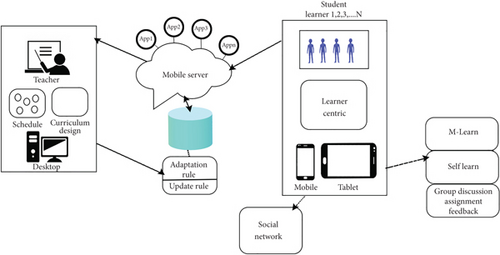
3. Results and Discussion
Figure 2 depicts the performance of the multiprocessor learning CNN algorithm, which is a deep data analysis method capable of extracting the most value from the information process by analysing and modifying fundamental data. The overall result is 97 percent (refer to Figure 2). Deep learning methods challenge detection patterns from data because data processing is typically more intelligent and the amount of free information is relatively large. Table 1 shows the outcome. The online teaching objectives of a college English classroom, the teaching needs, and students’ needs are analysed.
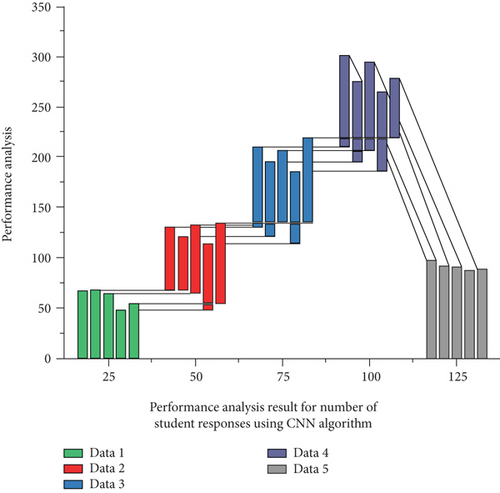
| Number of questioner response | Student record 1 (6000 data) | Student record 2 (6000 data) | Student record 3 (6000 data) | Student record 4 (6000 data) | Student record 5 (6000 data) |
|---|---|---|---|---|---|
| 20 | 66 | 68 | 64 | 48 | 54 |
| 40 | 64 | 53 | 68 | 66 | 81 |
| 60 | 80 | 74 | 75 | 72 | 84 |
| 80 | 91 | 81 | 87 | 79 | 60 |
| 100 | 97 | 92 | 91 | 87 | 89 |
Students believe that education is the goal and that education contains growth, recognition, understanding, service, and opportunity to reach their maximum potential (refer to Figure 3). According to behavioural product evaluation, the classroom English education of students obtains the performance of such a student framework for empowering kids both physically and mentally. Some college students disagree with the DL method because it teaches creative techniques and the ultimate trend. It has been shown that both teachers and students play an important role in teaching and learning activities. Teacher’s responsibilities include preparing a curriculum, planning classes, tracking students’ activities, and analysing students’ performance.
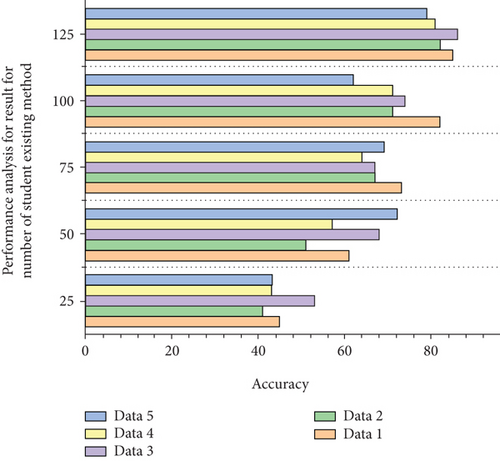
The first convolution surface has several layers. This first layer employs three convolutional kernels, but the second layer of the convolution kernel includes the result of the first convolution surface. The simple entanglement convolutional layer prototype, on the other hand, is difficult to converge and improve predictive accuracy. As a result, the proposed system has tested a particular joint CNN and English language model structure. The experiment results indicate that accuracy improves the effectiveness of the language model. The model, on the other hand, has a significant difference between testing and training sets. In terms of model construction, investigators employ letter extent and word level, both of which have varying effects on the final result. The term coding scheme was chosen by the model in this proposed system. The print model’s final ambiguity within testing set is 68.94%. A most recent training data perplexity score board statistics are shown in Figure 4. Following our investigation, humans realised also that convolutional high-direction network model was specifically designed and built for English textual data (Table 2).
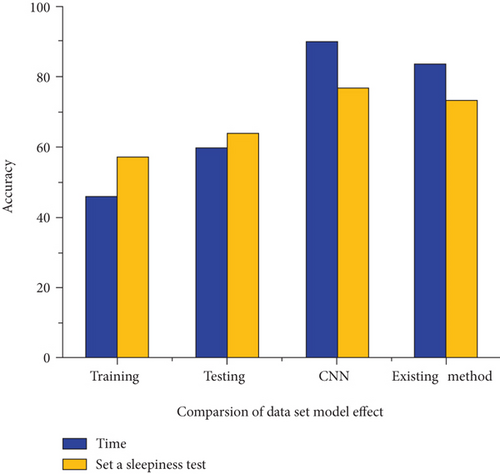
| Parameter no. | Language | The length of learning | Mean | Standard deviation | Frequency |
|---|---|---|---|---|---|
| 1 | A | 1 | 0 | 1/1 | 0 |
| 2 | Go | 2 | 7.14 | 2/2 | 0 |
| ⋯ | ⋯ | ⋯ | ⋯ | ⋯ | ⋯ |
| 3015 | Straight | 8 | 28.57 | 8/5 | 100 |
| 3016 | Constitutional | 14 | 50 | 14/13 | 12.82 |
| ⋯ | ⋯ | ⋯ | ⋯ | ⋯ | ⋯ |
| 8345 | Upbringing | 10 | 100 | 10/8 | 41.66 |
| 8346 | Float | 5 | 66.67 | 5/4 | 41.67 |
Depending on the description of difficulty for English lexical items, Figure 4 presents the distribution of difficulties of phrases and words used for the learning system.
The recommended English learning scheme has a normal distribution of levels of complexity for English words ranging from 3 to +3. The planned English learning system recommends words with appropriate difficulties to individual students based on skills (refer to Figure 5). When a student reviews a descriptor learning process, the term’s challenge decreases due to high levels of exposure to the word. College English learning includes both formal classroom instruction and informal after-class instruction. The current syllabus requires that the proportion of learning hours spent in class be greater or equal to. In general, many English teachers prefer positivist research techniques in their classrooms. Constructivism emphasises not only initiative and sociality but also learning context. Constructivists advocate presenting the entire process and allowing students to solve problems within it.
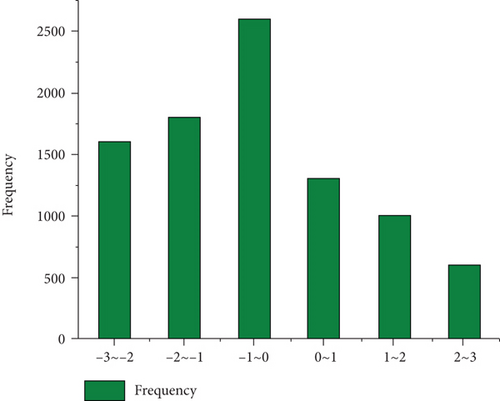
This section explores whether the suggested memory process updating scheme improves learner retention of information from the reviewed ways of speaking. It provides data on learning and memory for the reviewed ways of speaking for 20 participants. The number nine learner, in particular, has the best evaluation performance and has achieved the highest learning ability (+4) in five weeks. In the meantime, the limited memory cycle of each language reviewed by her was enlarged from zero to nine days after 5721 repetitions of the review process. In fact, Table 3 shows that the 16 percentile learner has excellent learning and performance because the student achieved an accelerated score of 5 points after five weeks of learning and reviewing. Furthermore, the average extended memory cycle of 20 learners is 4.79 days per reviewed vocabulary. This result demonstrated that the suggested learning review strategy can indeed help learners improve their retention of English-learned information.
| No. of learner | The number of lessons learned | The number of times the review processes have been carried out. | The difference in scores between the pretest and posttest |
|---|---|---|---|
| 2 | 783 | 783 | +5 |
| 5 | 452 | 1459 | +5 |
| 9 | 689 | 5721 | +4 |
| 16 | 928 | 231 | -2 |
| 20 | 575 | 174 | -3 |
Eventually, this research creates a self-assessment questionnaire for learners to self-assess their English learning abilities. The questionnaire asked students to rate their English vocabulary abilities in between lessons on a 20-point scale. Thirteen of the twenty students thought their learning abilities improved after using the developed methodology for English learning; only two students thought their abilities remained the same, and no one thought their abilities were derived. Figure 6 depicts a comparison of learners’ abilities as evaluated by the learners themselves before and after the intervention. It replicates expert but also professor attempts to teach patterns of thinking but also employs sophisticated teaching techniques such as AI technologies and mobile media to create an online effective instructional system. Students are able to gain an understanding of the scheme by using mobile phones. The scheme can instruct different based not just on students’ knowledge and skills but also on learning methods.
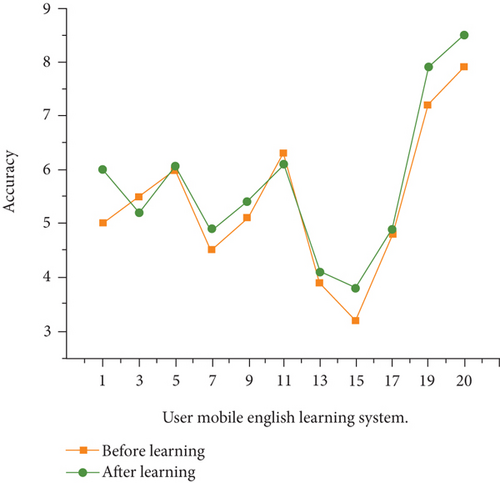
Eventually, this work creates an identity questionnaire so that learners can evaluate their own English learning abilities. Students were asked to rate their English vocabulary skills in between lessons on a 20-point scale. Students believed their learning abilities had improved after using the processes based on English learning; only a few students believed their abilities had remained the same, but no one believed their abilities had been derived. Figure 6 shows a comparison of learners’ abilities as assessed by the learners themselves following the initial intervention. The comparison result analysis for the existing method accuracy of after and before learning accuracy is 92.45% in the mobile English education system which is best for our proposed method after and before learning accuracy of 97.56% (Table 4).
| Algorithms | After learning | Before learning | Accuracy |
|---|---|---|---|
| CNN algorithm | 89.45 | 79.98 | 97.56 |
| Existing method | 82.45 | 74.65 | 92.45 |
4. Conclusions
Based on the emerging online platforms, the needs and current situation of college English teaching are analyzed. Then, a teaching scheme using a mobile English learning system is proposed. Based on the results of previous research, the guiding learning theories needed in the development of learning systems are sorted out. Moreover, the questionnaire method was adopted to demonstrate the feasibility of a mobile learning system. In this study, an English mobile learning system was designed for colleges, and the teaching effect was tested. The study proposed the multiprocessor CNN algorithm for evaluating the teaching effects of the English mobile learning system. The study results proved that the proposed algorithm works well compared to the existing methods used for analysing the teaching effect.
Conflicts of Interest
The authors declare that they have no conflicts of interest.
Acknowledgments
This study was supported by the Higher Education Research Project of Jilin Province Higher Education Association administered by the Jilin Provincial Higher Education Association in 2020: On Research and Application of Competence-Oriented Modern College English Online Course (no. JGJX2020D560) and also was supported by the Higher Education Research Project of Jilin Province Higher Education Association administered by the Jilin Provincial Higher Education Association in 2021: A Study on the Construction of a Diversified and Collaborative Training Model for Foreign Language Talents under the Background of New Liberal Arts (no. JGJX2021D530).
Open Research
Data Availability
The data used to support the findings of this study are included within the article, and more detail data used to support the findings of this study are available from the corresponding author upon request.



